La Manual Alpargatera: How espadrilles are handmade
By Manish Puri
I’m sitting at a round wooden table in the back office of La Manual Alpargatera. The owner, Joan Carles Tasies, is holding a chilled bottle of ratafia in his thick right hand and pours a measure into a glass in front of me.
“One day I received a panicked phone call from Jordi, one of our staff,” he says. “‘Your mother is in the shop,’ he tells me, ‘she’s selling shoes and climbing up to the top of the stepladder’. This was the fourth time my mother had come out of retirement and I had to tell her that this could not go on. It was too dangerous for her.”
“How old was your mother at this point?”
“95.”
I did sympathise with Joan Carles. Even with 40 years in the business and his status as owner, how could he expect the woman who had worked in the shop since it opened (in 1940) to listen to anything he said?
La Manual Alpargatera (alpargatera being the Spanish word for espadrille maker) was established by husband-and-wife Juan Olivé and Emilia Martínez. The photo above shows the couple in their shop - but conceals two things.
Firstly, Juan was in fact Joan, but it was forbidden to use Catalan names at the time. Secondly, whilst Juan/Joan’s name is emblazoned across the store, it wasn’t really his business but his wife’s; but it was also unacceptable for a woman to run a business.
It was Emilia’s vision to bring the espadrille out of the country and into the city – preserving traditional techniques but refreshing the style to make them more fashionable. La Manual Alpargatera made wedge-heel espadrilles 30 years before Yves Saint Laurent (working with Castañer) sent them down a Parisian runway to worldwide acclaim.
When the shop opened in Barcelona’s Gothic Quarter it was Joan Carles’ mother, Juana Martínez (above with her husband Francisco Tasies – for the avoidance of doubt he’s on the right), working as a sales assistant, who sold the very first pair of espadrilles.
After the passing of Emilia in 1980, Emilia – having no next of kin – knew only one person she trusted with her legacy; the business has remained in Joan Carles’ family ever since.
The lineage of women as the driving force behind the business remains intact. Joan Carles’ wife Asilde Sanchez (both above) has helped run the shop for 20 years and is now the ever-smiling and ever-present general manager – during my visit I realised she’d helped me pick out my last pair in 2019.
La Manual Alpargatera is unique among local retailers in that they continue to make their shoes in Barcelona – either in a factory near Tibidabo mountain or in a small workshop towards the rear of the store, at a table which hasn’t changed since 1940.
The in-house team is made up of around 10 people and the sales staff are all trained to make espadrilles in the workshop.
The aim is also for everyone to be sufficiently versed in the process that they can answer any question a customer might have. A laudable approach to retail, but not without its pitfalls, as Joan Carles recalled a particularly curious set of customers.
“A Korean family visited the store one morning, asked a lot of questions and stayed until we closed for siesta. They returned later that afternoon and stayed until the close. The next day they did the same thing. On the third day they bought some shoes,” he says.
I too was a beneficiary of Joan Carles and Asilde’s generosity with time. What I thought might be a two-hour chat spun into a 10-hour discussion on espadrilles, Barcelona politics and getting locked out of your hotel room while naked. You’ll be relieved (or perhaps dismayed) to hear that this article focuses on the first.
The first espadrilles were made 7000 years ago using (and named after) esparto grass - a strong and wiry fibre which has the unfortunate quality of smelling “like a pig’s barn” when wet.
Later hemp was used for the soles. Its soft (feels like “walking on carpet”) and flexible nature seems ideal for espadrille making, but it too is not without issue.
Cultivation of the cannabis plant required to make hemp fibre was problematic in Spain for many years. The fibre used for shoe making is also quite hairy, which means it is difficult to work it with machines – one could use finer clothes-grade hemp, but this would be prohibitively expensive and any sole made from it would have little flexibility. Finally, hemp is remarkably good at sucking up and holding onto water – Joan Carles knows local plumbers who continue to use coils of hemp instead of Teflon tape to seal pipes – and so a wet hemp espadrille can feel like a Dutch clog.
For these reasons, jute has replaced hemp as the fibre of choice. It is softer than esparto (and gets softer over time), smoother (and therefore easier to work with) and soaks up less water than hemp.
Whilst on the topic of water, I gingerly broached the question of what to do with hand-sewn espadrilles that had, despite the best of intentions, gotten wet at the beach. I was asking for a friend. I anticipated sucking of teeth, a disappointed shake of the head and an invitation to leave the store and never return. But Joan Carles was serene.
The advice is to machine wash the espadrilles cold with a neutral soap (ideally with a towel or bathmat so they don’t get too bashed about) and then machine spin them two or three times to expel as much water as possible. To finish drying, leave them sole side up out of direct sunlight – they won’t dry properly with soles down and the uppers will absorb colour from the jute. To tidy them you can scissor trim the soles (“the moustache”) as desired. Water is less of an issue than persistent humidity, which can leave the jute “rotten” if it doesn’t get the opportunity to rest and dry.
Next, we stepped through each stage of making an espadrille. I highly recommend readers take a look at this video which captures the process, but I offer a simplified summary of a process that can take between two to three hours here.
Jute rope is coiled to form a loose outline of the sole.
A thick wooden-handled needle is used to pierce the rope coils and worm thread throughout it – each pull of the thread squeezing the roped sole closer together.
I was given the chance to drive the needle through a sole made up of around six coils of rope. I made it through two coils before nearly skewering the palm of my opposite hand. It’s tough work, as illustrated by the callouses on the hands of the artisan above.
The uppers - usually made of cotton canvas - are then stitched to the sole by hand and any other elements such as ribbons are finally added.
But what’s the benefit of all this handwork? Inexpensive machine-made and glued espadrilles are readily available (often hailing from Bangladesh, where the majority of the world’s jute is grown) and they look quite similar – sometimes deceptively so, as decorative stitching is added at the end of the gluing process to suggest handwork.
Asilde gave me a pair of handmade espadrilles and invited me to bend them using the very same muscles that had failed to push a needle through rope. Sure enough, I was able to bend the soles, which returned to shape once I released my grip.
She then asked me to do the same with a pair of machine made, glued soles. Nothing. It was stiffer than a glass of homemade ratafia.
A handmade and handstitched sole is flexible, which confers comfort as it bends with the foot – it’s better for the longevity of the shoe and the body. Also, a glued espadrille can’t be washed with the same confidence as a stitched one – the vigour of the machine, the water and the detergent all combine to soften the glue.
While Joan Carles repaired some gouges in the wooden fitting benches that curve around the front of the shop (another fixture that has survived from 1940), Asilde talked me through their men’s shoes. Though occasionally she had to hare up the ladder to fetch sizes or retreat to the workshop and hammer a last into the toe cap to return shape to a pair that had laid flat for too long.
There are currently 11 models in La Manual Alpargatera’s men’s range (pictured below) not all of which are available online. I’ve picked out the ones I think would most interest the PS reader but happy to answer questions on others below the line if that’s helpful.
The Barcemola, Manchester and Tossa models (the first three shoes on the left) are closest to what I would consider a classic espadrille.
The Barcemola is a little wider in the foot and the canvas is printed with designs inspired by Barcelona – the elegant ironwork of Passeig de Gracia or the city flower.
The Manchester (which is the model I’ve worn for the past few years and found to be large to size) is shaped so that there is no left or right side and thus can, if you want, be rotated (like tyres) to even out the wear and extend their lives.
The Tossa is squarer than the Manchester in both the toe and the vamp which might make them initially uncomfortable for anyone with a high instep.
The Mundet (fifth from the left and above) is a blucher and La Manual Alpargatera’s bestselling men’s shoe.
Unlike classic espadrilles, where Asilde advised me to fit them snugly to my bigger foot – assured by the fact that both the canvas and hand stitching will give through wear – the Mundet was immediately comfortable to walk in (and a blessing for my feet, which had just endured three days at a music festival).
The Pinxo, Taverner and Valls models (respectively seventh, eighth and ninth from the left) are all traditional Catalan espadrilles with ribbons woven into the uppers.
The Pinxo was favoured by Salvador Dalí (above) who was a regular customer - it is available with and without ankle ribbons.
A pair of La Manual Alpargatera’s Taverner espadrilles from 1955 resides in the Met Museum’s collection.
The Valls is made by La Manual Alpargatera for the Mossos d’Esquadra (the autonomous Catalan police force) and forms part of their costume dress.
Each of the models comes in various permutations of insole (bare jute, canvas lined and padded) and outsole (bare jute, crepe, vulcanised rubber and recycled tyre – all shown above).
Joan Carles and Asilde were unequivocal that “bare foot and bare jute” is the best way to experience an espadrille. However, they understand that the customer might wish to trade the tactility and breathability of bare jute for the instant comfort and increased durability of a padded insole with rubber outsole.
If the combinations online or instore are not to your liking, then La Manual Alpargatera offer a comprehensive made-to-order programme where you can even provide your own fabric - Joan Carles told me about one menswear writer that had a series of espadrilles made to match the colour of each of his summer shirts.
I’m toying with the idea of having the Pallars mule slipper made with a flannel upper and a bare jute sole; the combination of smooth wool and cool, crunchy jute putting me in mind of an inverted apple crumble and ice cream, for the feet.
Joan Carles impressed upon me the lead time for custom orders – at least two weeks during the winter and four weeks in the summer. I explained that the PS reader is a rare breed – a sartorial camel that can go months, if not years, waiting for commissions, sustained only by the memories of past triumphs and the hope that the next will be the best yet.
In the days that followed my visit I exchanged texts with Joan Carles, sharing photos and clarifying points of discussion.
“You know with all that talk I probably [didn’t] mention our goal for our business,” he said. We wish to be in every citizen of Barcelona’s shortlist of things [that make them] proud of their city. We’ll never be like Barça [the football team] or Sagrada Familia, but we’d like to be in their ‘second row’ after that.”
It is a lofty ambition to be sure; but so was Emilia Martínez’s.
You can read Simon’s article on why he loves espadrilles, and how he styles them, in a recent article on the subject here.
I would like to extend my warmest thanks to Joan Carles and Asilde for their time, hospitality and knowledge of Basque desserts.
Photos 2, 3 and 8-11 are courtesy of Joan Carles Tasies/La Manual Alpargatera.
All other photos (except 16) are by Manish Puri. Manish is @the_daily_mirror on Instagram


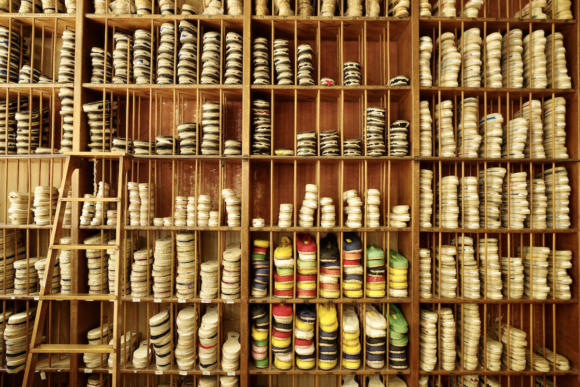
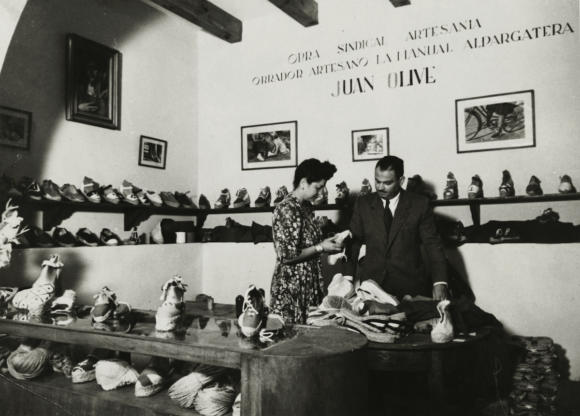

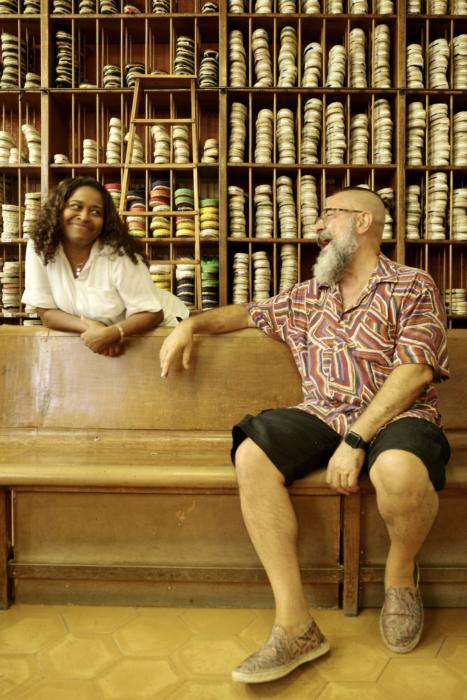
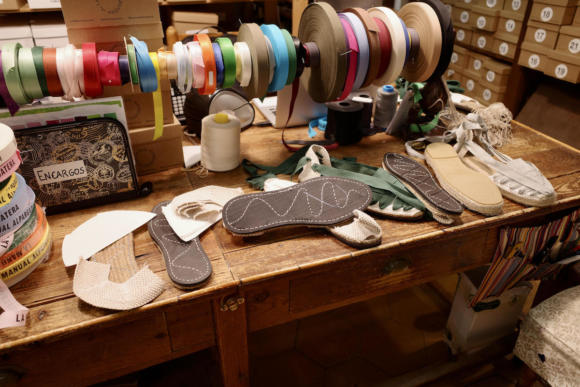
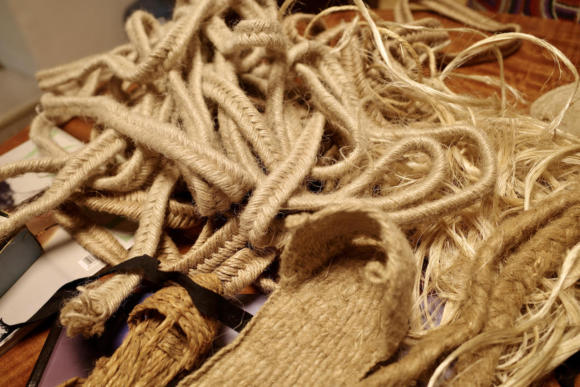
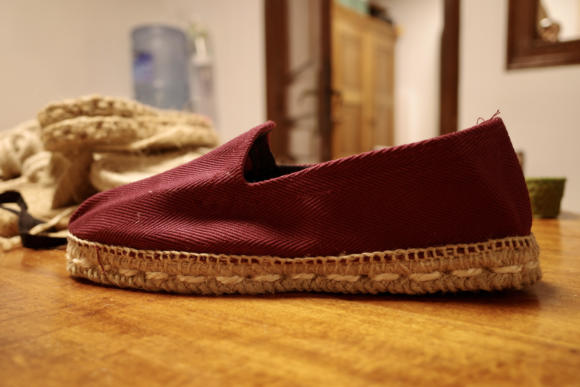
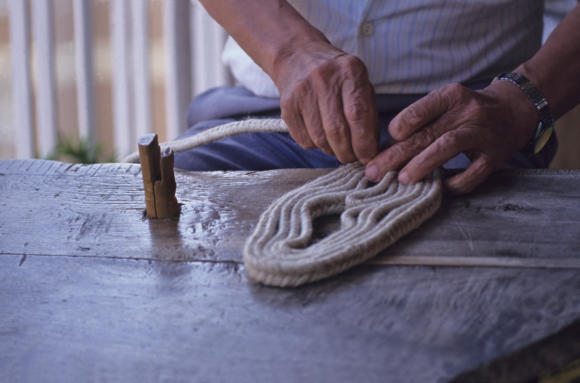
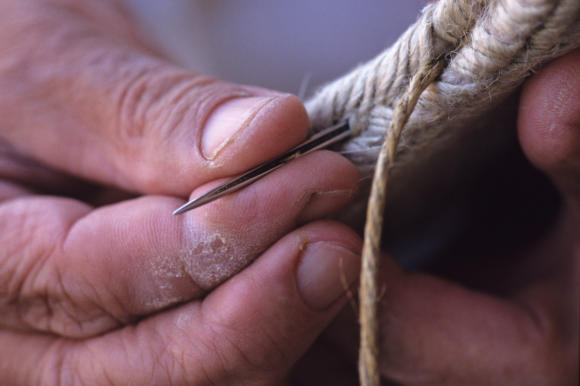
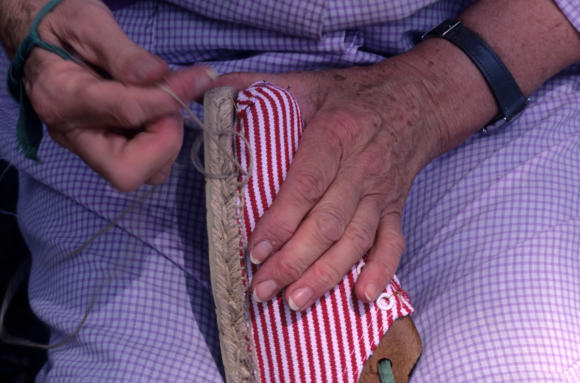

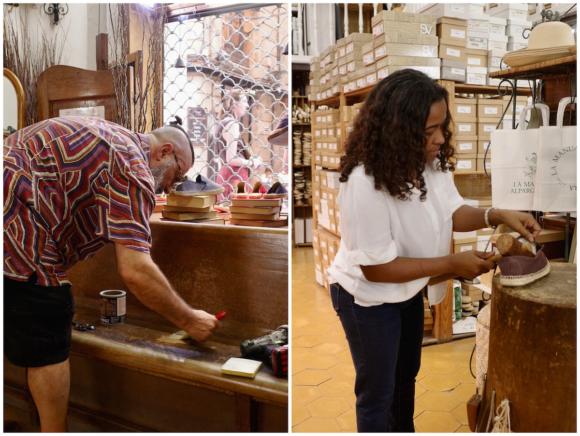
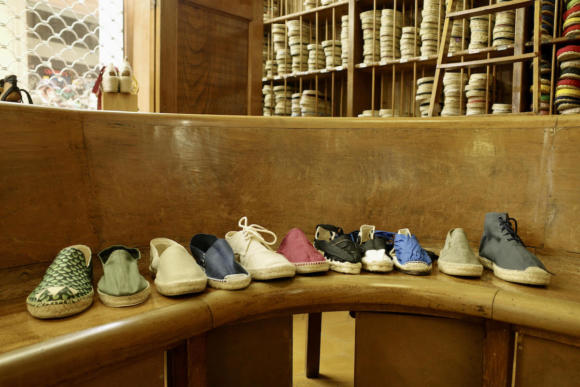
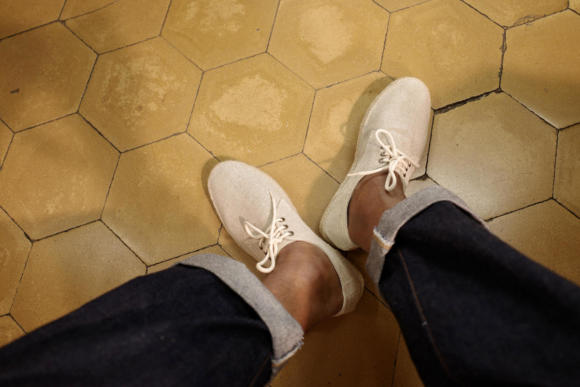
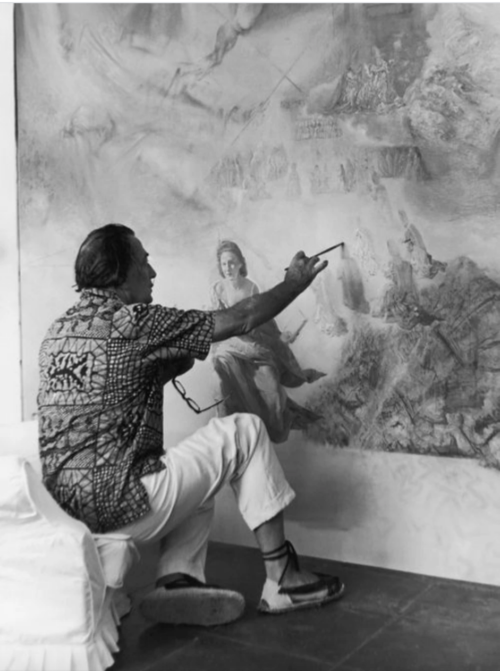
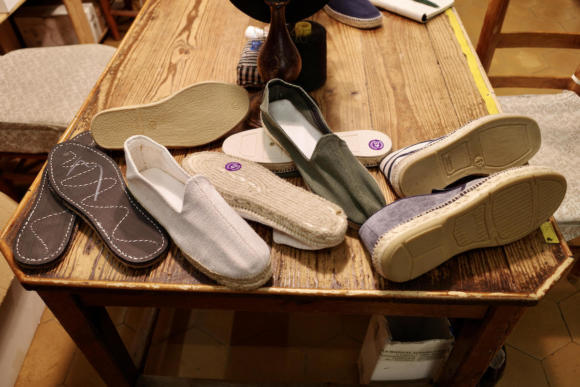
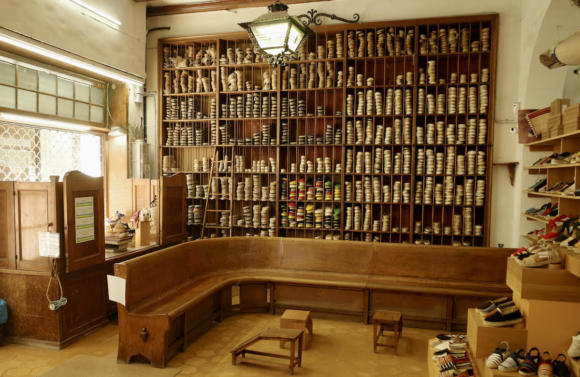
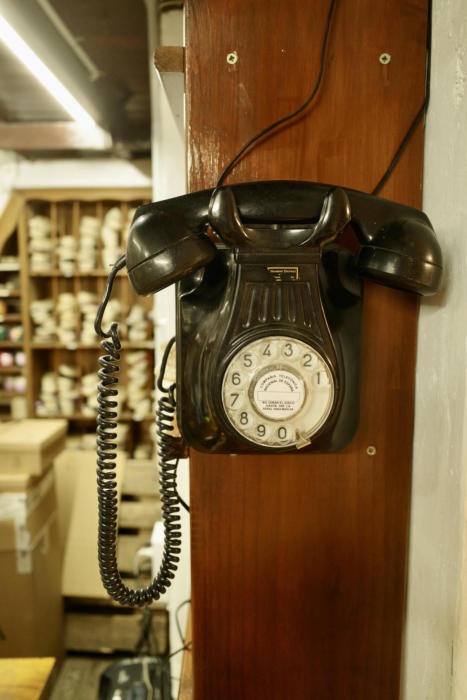

























Hi Manish,
A fascinating and informative article written in your usual upbeat and conversational style. Thank you.
Best Regards
Stephen
Cheers Stephen! I’m really pleased you enjoyed it.
Hi Manish,
Great article!
As a Spanish speaker I might add that the translation for “espadrille” is “alpargata”, and “alpargatera” could be translated as “espadrille factory”.
Hi Dario
Thanks so much. Yes, my apologies, that was an error on my part which should be corrected shortly.
Cheers,
Manish
Never worn these type of shoes and always thought them a little ‘meh’ and worse but now I know more I am tempted to give them a try. Thanks for that.
Thanks very much, Gary. I’d definitely take a look at Simon’s article which is linked above as it has some lovely photos and great styling advice for espadrilles.
Perfect timing chaps,as we have a weekend in Barcelona in September.
Manish. do laces make a significant difference with fit?
Hi Peter
Great! I hope you get a chance to pop in.
Is this on the Mundet model? Yes, the laces helped to keep the foot in position which means you can afford to have a slightly roomier fitting in the length and width without losing your shoe.
On the unlaced espadrilles, they should initially fit quite close as they will quickly give through wear. Joan Carles told me about one customer who insisted (against advice) to purchasing a more comfortable fitting espadrille. He wore them out the shop and then tried to return them 30 minutes later as they’d already given enough to make them slip off the foot.
I hope that helps but you’ll likely bump into Asilde instore who I’m sure would be happy to assist 🙂
Cheers,
Manish
Manish, thank you. That’s really helpful.
I have quite wide feet, so the Mundet model appeals.
Thank you for such an interesting article! I’m on unt for some classic espadrilles. Which model would you recommend for a wearer with a wide feet? Manchester or Tossa? Thank you.
Your highness!
There isn’t much between them to be honest and they’ll both stretch a little as you wear them.
The biggest fitting difference between the two is that the Tossa sits higher across the foot which might be a little uncomfortable initially if you have a high instep.
So I’d go for whichever style appeals to you more. I have a relatively wide foot and have no problems with my Manchester espadrilles.
Cheers
Thank you, that’s very helpful. Since my size is 45 and the largest Manchester shoes are in 42, I’ll try Tosses, even though I prefer the simplicity of Manchester. Speaking if sizing, the website says you should measures my feet on a flat surface, however, it doesn’t say what to do with such a measurement. Am I missing something?
Hi
Larger Manchester sizes (without crepe sole) are available instore but I appreciate that might not work for you.
I think you measure from heel to big toe once your foot is flat.
Hope that helps,
Manish
Thank you. What I meant is I don’t know what to do with measurement of my feet taken in such a way. I didn’t find any chart on the website suggesting what size should I choose based on the measurement of my feet.
I find it amusing that you have to worry about getting a “beach shoe” wet.
Thanks for this lovely piece Manish. I am a huge fan of espadrilles, and there is no better footwear for Spain’s dry, hot summers. I wasn’t aware of La Manual’s illustrious history and heritage. Lovely to see such a traditional (and still useful) local craft highlighted like this.
As a resident of Madrid I have always used Antigua Casa Crespo, which is many ways is a counterpart to La Manual. It’s been owned by the same family since the mid-nineteenth century, they hand-make everything in La Rioja. I own a few pairs of their canvas espadrilles, and they have never disappointed. A wonderful old shop if you ever get the chance to visit.
Thank you so much, Andrew. And thank you for your recommendation!
These espadrilles are machine washable?! You’ve changed my summer footwear worldview, Simon. I have rose pink espadrilles I got from Nordstrom that need spot cleaning after every wearing. Such a pain.
I went through the La Manual checkout process far enough to determine they do ship to the U.S. They don’t seem to deduct VAT for U.S. customers, which seems wrong. Their shipping is about 30 euros, which seems reasonable for footwear. Not every women’s style is to my liking, but I saw a few I’m eager to try. Tonight I’ll measure my feet according to their directions.
“I explained that the PS reader is a rare breed – a sartorial camel that can go months, if not years, waiting for commissions, sustained only by the memories of past triumphs and the hope that the next will be the best yet.”
A humorous but accurate statement, I think. I feel much the same way when I have clothing made to measure locally.
Hi
I just wanted to clarify it’s the hand sewn models that are machine washable. It’s risky washing anything that involves glue (in the women’s models that will include thick wedge soles). If in doubt just check with the guys at La Manual Alpargatera ?
Hope that helps!
Catalan names have never been forbidden in Spain. Please, do not disseminate the lies of the separatists, who, as a matter of fact, have artificially increased the use of Catalan in Cataluña, which was already a minority in the times of King Fernando.
Very interesting article that reminded me of some old espadrilles from spain that i cant find.. by the way can you tell us more about your edward green model ? Im saving for it for winter
You mean the one I helped develop recently? It’s the unlined Belgravia, you can see it on the site now. It’s super comfortable, but EG do see it more as a summer shoe, so it won’t necessarily be in stock in the colder months.
Hi Manish,
Great article. Informative and fun to read. I am a recent convert to espadrilles and am sorry that I have stocked up on another brand. But one additional pair should work :-).
In all espadrille brands I’ve tried, I was awkwardly between sizes. I usually went for the smaller size, and while they do stretch out, it’s still a bit too snug for my right foot in the end, and I’m glad to take them off at the end of a day. I understand it’s practical and economical to only deal with whole sizes, but I can’t help but think it ends up being a compromise for half of the customer base.
I love espadrilles! Perfect for the tropical country i live in. Well, at least during the dry season?! No one wants soaked alpargatas!
One of the great benefits of the PS site is learning about brands I’d have never otherwise heard of. My espadrilles, Manish, arrived today from Spain and are a great colour and fit. I shall enjoy them in the hot British weather we are having right now.
In Denmark we have a strong affinity for the Chinese equivalent, mao shoe. I assume it is related to the strong socialist/ communist orientation we had in the 60’s and 70’s. Is it ever seen in the UK?
We would call that kind of shoe a plimsoll probably, a simple gym shoe. There is a tradition there of Vans shoes in that kind of elasticated make, but personally something with elastic like that loses most of the elegance of an espadrille (though undoubtedly easier to fit)
Thanks for the reply Simon. Plum sill seems to share the same aesthetics, however the some is rubber. The Mao Shoe is rolled cotton, stacked and sewn together. Similar to espadrilles. But you are right, the elastic bands in the side do give in after a while
Here is an example
https://denkinesiskebutik.dk/vare/kinasko/
Aha, thanks I didn’t know that about the sole
Hi Simon, How would you compare these to the Diego’s in terms of made and fit as they are both made in Northern Spain. Thanks
I don’t know I’m afraid, as I don’t have both – I’m not sure if Manish does
Hello Eric. I just bought my first pair of Black Espardenya in size EU 43 / US 9 / CM 26,7 https://diegos.com/collections/men/products/black-espardenya-for-men. My feet size is 27 CM and I had heel slippage out of the box. I’ve returned them and I’m exchanging them for EU 42 / US 8 / CM 26. This is my own first experience of an Espadrilles made in Spain and I’m sizing one full size down as the canvas uppers would stretch overtime and mould to the shape and size of your feet. Hence they have to fit you tightly and snugly out of the box. Diegos also have a very good customer experience and with my exchange pair of Espadrilles they’re also sending me a pair of padded cushions – If they are slightly too big, I can put them on the back part of the espadrilles. It usually works really well to maintain the heel in place. But I hope that’s my last resort as I would want to wear and experience my first pair of Espadrille with bare foot without any padded cushions. I hope this helps you. I don’t own any pairs from LA MANUAL ALPARGATERA. And to be honest I didn’t find their customer service of much or any help.
https://youtu.be/B_gsRnSc3KA